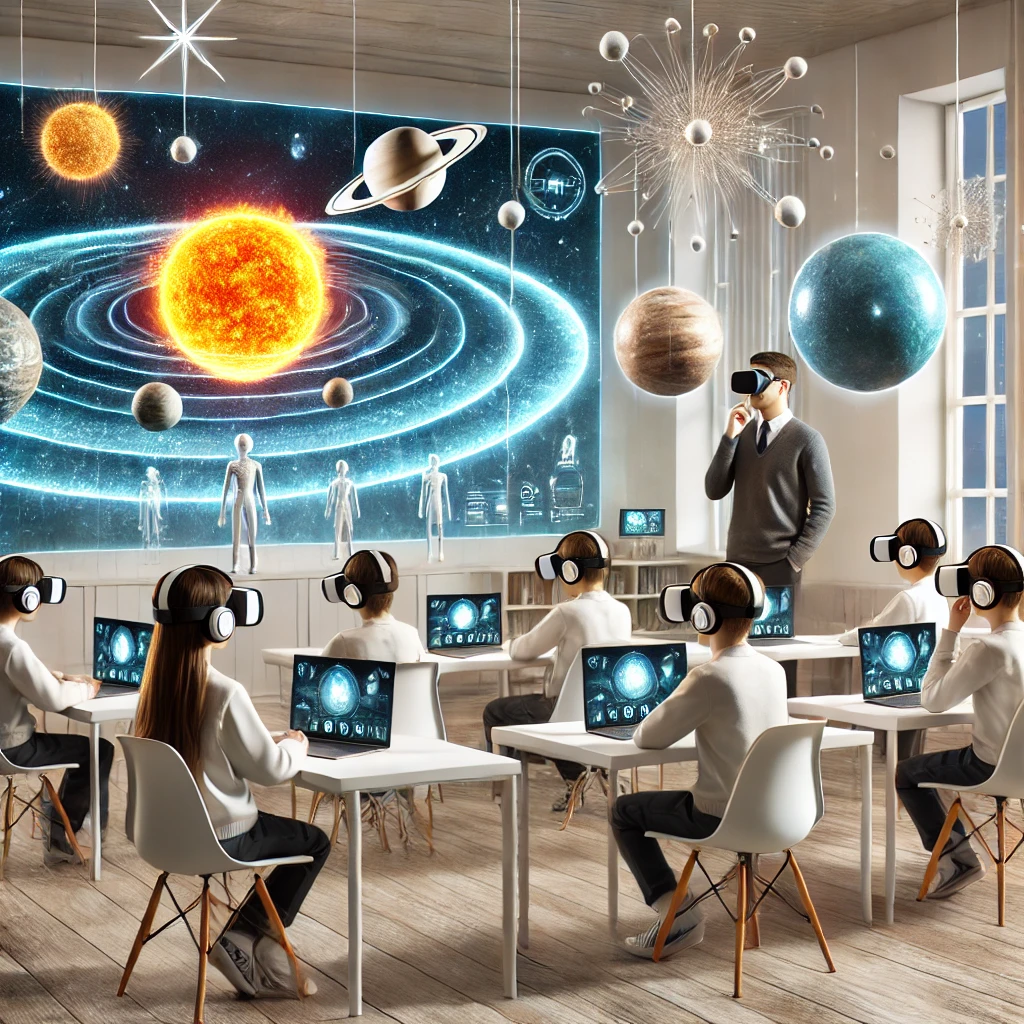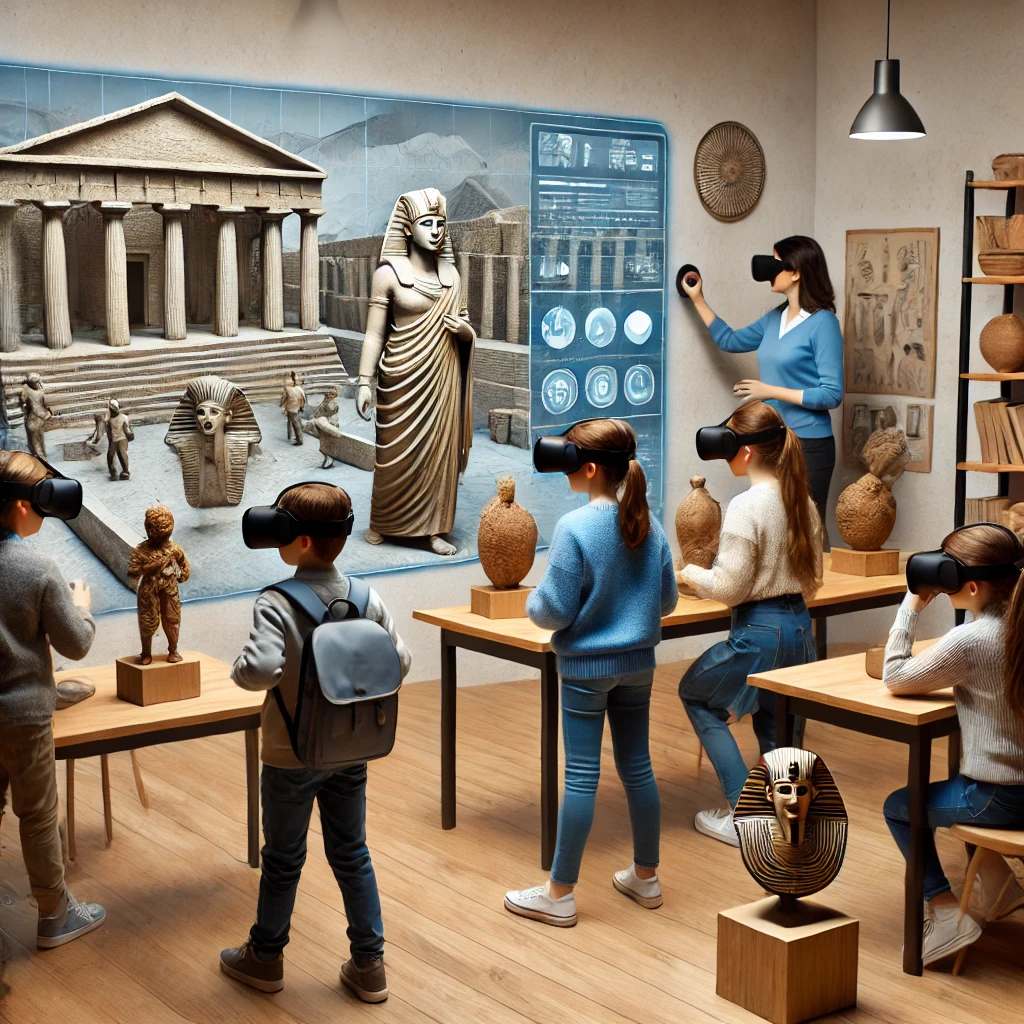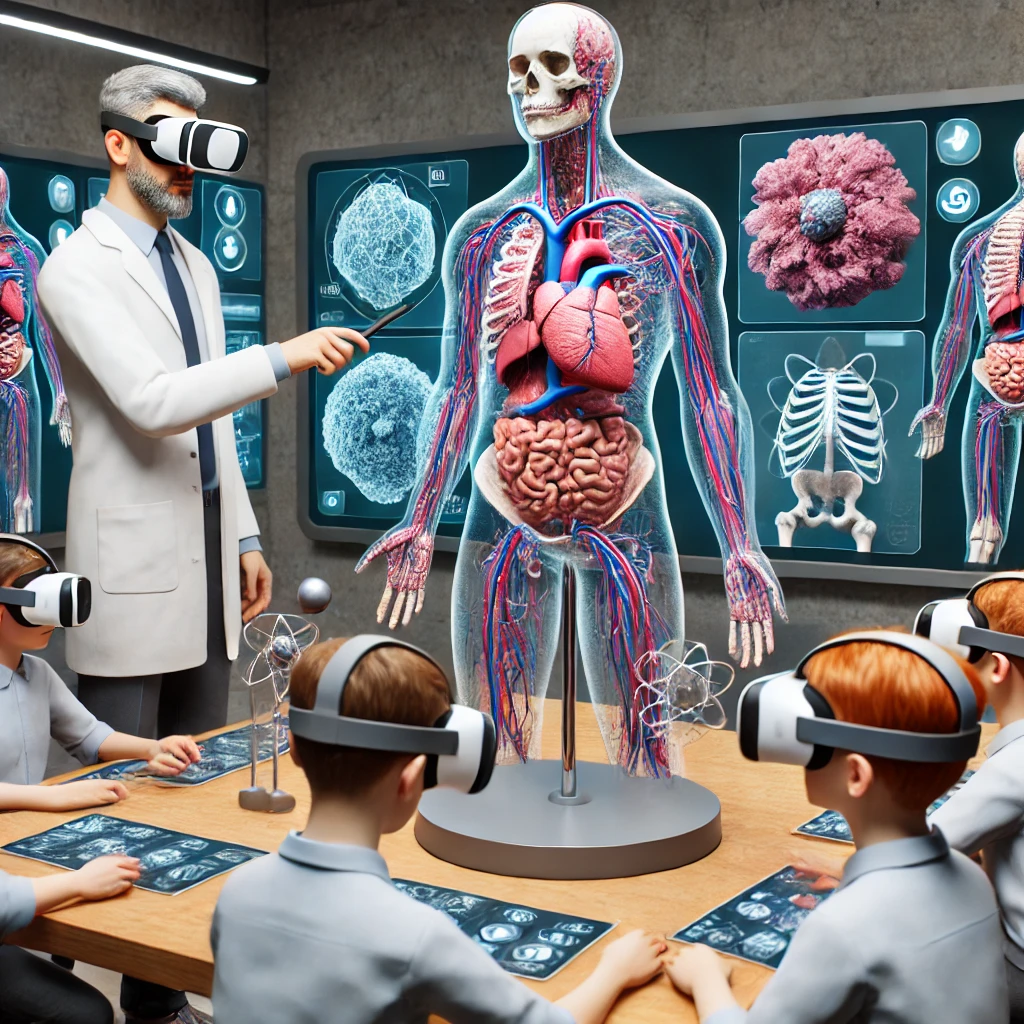What is VR, and Why is it Important for Education?
Virtual Reality, or VR, is an immersive technology that transports users into a digitally created environment, simulating experiences that feel real. In recent years, VR has gained significant attention in the education sector due to its ability to engage students deeply and make learning more interactive.
Imagine students exploring the solar system up close, interacting with historical artifacts, or performing virtual science experiments – all from within their classrooms. This is the transformative potential of VR in education, offering students a chance to learn by doing rather than by simply observing.
Why VR is Gaining Importance in Education
Traditional classroom methods often rely on lectures, textbooks, and static images. While these methods are effective, VR brings a new layer of engagement by allowing students to visualize complex subjects, practice hands-on skills in a safe environment, and access resources beyond the limits of a physical classroom. The excitement and curiosity that VR brings can increase motivation and make learning memorable.
For a deeper understanding of VR and how it works, you can refer to What is Virtual Reality? A Beginner’s Guide.

Key Benefits of VR in Schools
Virtual Reality in education goes beyond just captivating visuals; it brings substantial benefits that enrich the learning process and foster a deeper connection with the material. Here are the core advantages VR offers to schools:
Improved Student Engagement
VR transforms passive learning into active, hands-on experiences, where students become participants rather than mere observers. For example, they can walk through an ancient civilization or interact with microscopic cells. This level of engagement makes learning memorable, sparking curiosity and encouraging students to explore beyond the surface.

Deeper Understanding of Complex Subjects
Subjects like biology, astronomy, and history often involve abstract concepts that are challenging to grasp. VR bridges this gap by providing realistic simulations and 3D models that make these concepts tangible. Imagine students navigating through the human body, exploring organs, or zooming into cells — VR enables them to see, feel, and understand in ways traditional textbooks cannot.
Safe Environment for Skill Practice
In fields like science and engineering, VR allows students to practice skills and conduct experiments in a risk-free environment. For example, students can conduct virtual lab experiments, learn to operate machinery, or even practice emergency procedures without any safety risks. This empowers students to learn by doing, building confidence without the fear of real-world consequences.
Access to Global Content and Experiences
VR enables students to “travel” to distant places or explore diverse ecosystems without leaving the classroom. Virtual field trips can take them to historical sites, national parks, or even the depths of the ocean. This broadens their perspectives and enhances cultural understanding, making education truly borderless.
Check “Top VR Apps for Learning in 2024” for a list of popular VR applications that enable global learning experiences.
Practical Applications of VR in the Classroom
VR has vast applications across different subjects, making learning an engaging, hands-on experience. Here are some practical ways VR is used in classrooms:
Science Classes
In subjects like biology, chemistry, and physics, VR provides students with immersive simulations. They can explore the human body, navigate through the solar system, or even conduct virtual lab experiments safely. These experiences allow students to grasp complex concepts visually and practically.

History Lessons
History comes alive when students can “visit” historical sites or interact with artifacts. VR allows them to step into ancient worlds, like the pyramids of Egypt or the streets of Rome, and learn about cultures and events firsthand. This immersive experience helps students develop a personal connection with history.
Check “VR for History Lessons: Benefits and Apps” for more in-depth history-related VR tools and apps.
Language Learning
VR provides a safe environment for practicing new languages by simulating real-world scenarios, like a busy market or a casual conversation in a café. Students can engage in conversational practice and improve language skills in a realistic setting without leaving the classroom.
Special Needs Education
For students with specific learning needs, VR can offer tailored experiences that make learning more accessible. VR environments can be adjusted to reduce sensory overload or to include auditory and visual aids, allowing all students to engage in the learning process at their own pace.
Case Studies: Schools Successfully Using VR
Around the world, schools have begun to adopt VR technology in creative ways, with notable success stories showing the potential of VR in education. Here are a few examples that highlight the transformative impact VR can have on learning.
Google Expeditions
Google Expeditions is a program that offers VR field trips to schools, enabling students to explore famous landmarks, distant ecosystems, and even outer space without leaving the classroom. Schools using Google Expeditions have reported heightened student interest and retention rates, especially in subjects like geography and biology, where visual experiences enhance understanding.
The Foundry College (USA)
In this innovative institution, VR has been incorporated into a range of subjects, from science labs to social studies. Using VR, students interact with complex subjects in real-time. For instance, in history lessons, they explore ancient sites and learn about historical events from a first-person perspective. This approach has reportedly improved engagement and comprehension among students, making it easier for them to grasp complex ideas.
VR Learning Partnership (UK)
A group of schools in the UK formed a partnership to integrate VR into their STEM (Science, Technology, Engineering, and Mathematics) curricula. The VR Learning Partnership has allowed students to conduct simulated science experiments and engage with challenging STEM concepts interactively. By integrating VR, students develop a hands-on understanding of topics that were previously theoretical or limited to textbooks.
Also check “How Schools are Implementing VR Programs” for an in-depth look at how schools worldwide are bringing VR to their classrooms.
Challenges and Considerations
While the potential of VR in education is exciting, there are challenges that schools and educators need to consider before fully adopting this technology. Understanding these obstacles can help schools prepare for a successful VR implementation.
Cost and Accessibility
VR equipment, including headsets, VR-ready computers, and educational software, can be costly. For many schools, especially those in underfunded areas, the expense of implementing VR may be prohibitive. However, as VR technology becomes more mainstream, prices are expected to decrease, making it more accessible. Schools can also explore grants and partnerships to fund VR initiatives.
Teacher Training and Preparedness
For VR to be effective in the classroom, teachers must be comfortable using it. This requires training programs to help educators learn to operate VR devices and incorporate them effectively into their lesson plans. Schools must invest in professional development to ensure teachers are prepared to guide students in these new virtual environments.
Content Relevance and Quality
Finding high-quality VR content that aligns with educational standards can be challenging. Schools need VR content tailored to their curriculum, which may not always be available. To address this, some institutions are collaborating with content developers to create custom educational VR experiences that meet specific learning goals.
Here you check “Challenges of Adopting VR in Education” for a deeper analysis of the hurdles in implementing VR in schools.
The Future of VR in Education
The future of VR in education is incredibly promising, with research highlighting its potential to provide immersive, hands-on learning experiences that traditional methods struggle to replicate. Scientific studies have identified several key areas where VR is expected to make a profound impact in educational settings:
AI-Driven, Personalized VR Experiences
According to a systematic review on VR in education by Radianti et al. (2019), VR applications benefit significantly from integrating educational theories that support personalized learning. This approach, combined with artificial intelligence (AI), allows VR to adjust the pace and content based on individual students’ learning needs. AI can help deliver customized lessons, provide real-time feedback, and foster a more engaging and personalized educational experience.
Immersive Learning Environments in K-12 Education
Research by Passig and Sharbat (2001) discusses how VR can transform K-12 education through immersive environments that stimulate experiential learning. VR is expected to become central to various subjects, allowing students to engage directly with content, such as virtual field trips, historical site explorations, and scientific experiments. These immersive experiences could redefine classroom learning by making it interactive and sensory-rich, enhancing engagement and knowledge retention.
Expanding VR Applications in STEM and Health Education
VR has already found a foothold in specialized fields like medical and engineering education. Pottle (2019) notes that VR allows medical students to practice procedures in a safe, simulated environment, making complex training accessible and cost-effective. Similarly, in STEM education, VR supports intricate simulations that are often unfeasible in a physical lab setting, such as molecule visualization and architectural modeling, as reviewed by Wang et al. (2018). As VR technology continues to evolve, it is anticipated that more specialized fields will adopt it, enhancing students’ skills through hands-on practice.
References
- Radianti, J., Majchrzak, T. A., Fromm, J., & Wohlgenannt, I. (2019). A systematic review of immersive virtual reality applications for higher education: Design elements, lessons learned, and research agenda.
- Passig, D., & Sharbat, A. (2001). The Why and How VR in Schools: A Preferred Future Pedagogic Mission by a Group of Worldwide Experts in VR and Education.
- Pottle, J. (2019). Virtual reality and the transformation of medical education.
Why VR is a Game-Changer for Education
VR is reshaping the educational landscape, providing students with unparalleled opportunities to engage with their learning material actively. By making lessons interactive, immersive, and customizable, VR creates an environment where students can explore, experiment, and understand complex concepts more effectively than ever before.
From enabling virtual field trips to enhancing skills in STEM fields, VR is not just a tool for learning—it’s a transformative experience that bridges the gap between theoretical knowledge and practical application. As VR technology becomes more affordable and accessible, it holds the potential to become an essential part of classrooms worldwide, helping students to connect with knowledge in meaningful ways.
Educational institutions that embrace VR are not only adopting a cutting-edge tool but also fostering an environment where students can learn, grow, and prepare for the future in an engaging and innovative way.

Paul Graham, a renaissance man of the tech world, is a computer scientist, Lisp advocate, and prolific blogger. His insightful essays explore various tech and startup topics, making him a thought leader in the industry.